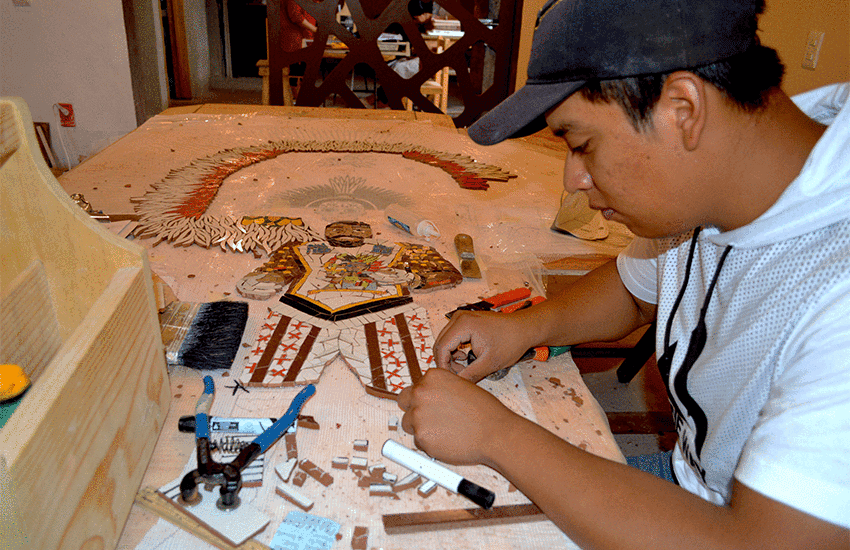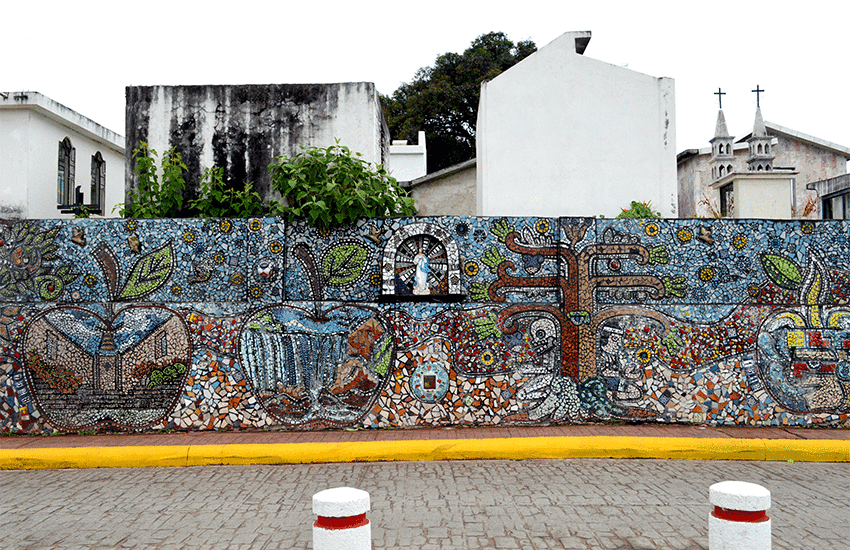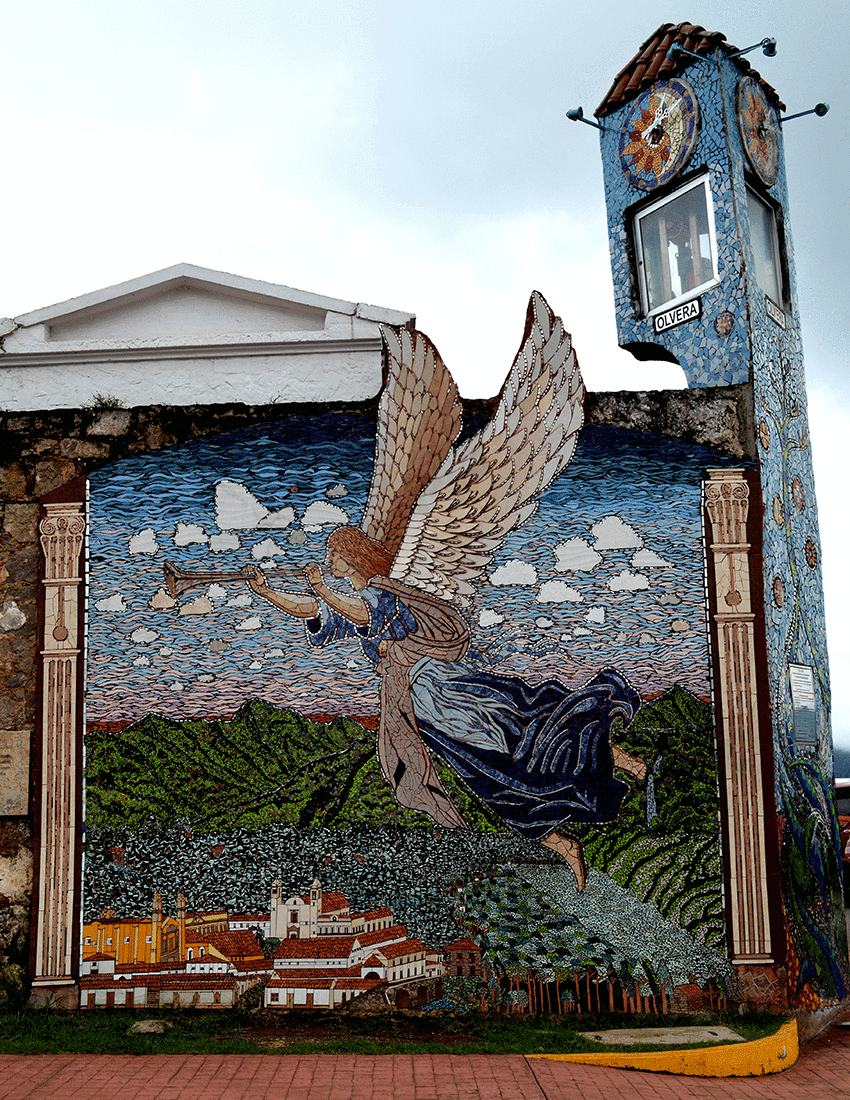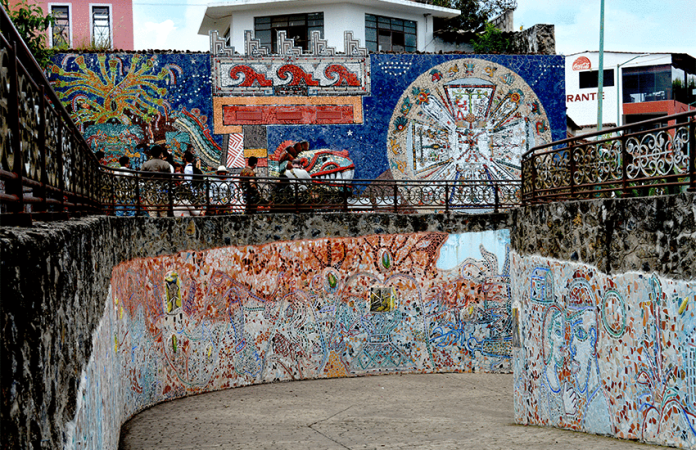Mexico’s Pueblos Mágicos (Magical Towns) tourism promotion program has been a phenomenal success, introducing city dwellers to small rural towns. However, too often those same visitors don’t make it out of the town’s historic center.
Mary Carmen Olvera Trejo has found one way to entice them out and spread the tourism money around a little better.
Zacatlán de las Manzanas, in the north of Puebla, has been a Pueblo Mágico since 2011. Like many others, it is home to quaint houses and a massive church and monastery complex.
One thing that sets it apart is that it is home to a monumental clock industry, epitomized by the main square’s “garden clock.” But there is more to see on the outskirts of town, such as the spectacular Jilgueros Ravine with its waterfall.
Olvera is a member of a prominent local family and involved in many civic affairs. In 2014, she organized Zacatlán’s first Corn Fair.

Her friend, American writer and philanthropist Dick W. Davis, suggested a commemorative mural for the event. Olvera agreed, and the two arranged for American tile artist Isaiah Zagar and local volunteers to work together to create Homenaje al Maíz (Homage to Corn) in the tunnel that links the ravine’s lookout point to the road leading to the town center.
Olvera was nervous when the images made from broken pieces of tile, plates, glass and mirrors started going up on the walls, but it soon became apparent that the result would be anything but graffiti. The mural, featuring an image of the god Quetzalcóatl, was an immediate success.
Only two months later, Olvera recruited another artist from the United States, Trish Metzner, to help design and direct a new mosaic mural dedicated to the area’s apple farming.
The work is titled Los 300 Años de Ser Zacatlán de las Manzanas (300 Years of Being Zacatlán of the Apples), referring to the first recorded reference of the town having the appended “de las Manzanas.” Finished in May 2015, the mural contains eight apples, each with a natural, architectural or cultural element related to Zacatlán. It was placed on the outer cemetery wall by both the tunnel and the lookout point.
By now, Olvera was completely hooked on the potential of community-assisted mural art. She continued by commissioning the mural Vivir en el Universo Náhuatl (Living in the Náhuatl Universe) for the back cemetery wall.
The front walls next to the main entrance were treated to a series of biblical scenes, a suggestion from the local priest. Olvera says these projects have been “… like hugs from the artists to give warmth, color, love and life to our ancestors …”

These projects also had technical issues that led to an innovation I have not seen anywhere else: the biblical faces required a certain level of realism, and the haphazard pieces that result in smashing tile and glass could not provide sufficient detail.
They found that by using end nipper pliers, they could snap off very small and exact cuts.
This technique has since been refined, and its possibilities are strongly seen in the series of murals that followed. After the cemetery, Olvera turned her attention to a small winding alley called the Callejón de Hueso (Bone Alley).
Believe it or not, even small towns like Zacatlán have their seedy sections, and this was it, despite it being between the historic center and the Jilgueros Ravine. The alley is bordered on both sides by two- and three-story houses with few windows, perfect for murals.
These walls have become a winding photo album, recreations of faded black-and-white photographs of Zacatlán in the past, with the title Zacatlán de Mis Recuerdos (The Zacatlán of My Memories). The change in the neighborhood is phenomenal. It is hard to believe that people once did drugs here late at night.
The murals have been extremely effective in leading foot traffic along the residential streets in town between the main plaza and the ravine. Because of this, small businesses such as restaurants and handcraft shops are opening in this area.

The old cemetery, which was all but ignored, has become another attraction. People have become interested in the old abandoned tombs.
The murals give residents pride because they now live among something truly special — something they themselves helped to create. Littering, vandalism and crime have gone down, and in more than seven years of community murals, not a single one has been vandalized.
Olvera shows absolutely no signs of slowing down. This year, she established the Casa de Vitralmuralista, an art gallery and workshop dedicated to this craft in support of current and future projects. Located on Callejón Linda Vista (near Porfirio Díaz), it is where the next mural project, México Lindo y Querido (Mexico Beautiful and Loved), is in progress.
This mural will highlight the regional dress of Mexico’s states, using even more refined techniques than what was used in the Callejón del Hueso project.
Olvera’s main role is logistics — recruiting people and fundraising. Donations are from private sources, mostly from Olvera’s very wide circle of contacts in Mexico and the United States.
The donations they receive include money, of course, but also tile and cement from both companies and individuals, often leftovers from other projects.
When Olvera started, it was just her and some of her family and friends. Today, mural-making is part of Zacatlán’s culture, with residents and other participants showing off their handiwork to friends, family and the world, both in person and through social media.
• If you are interested in knowing more about or even participating in one of the mural projects, you can contact Olvera on Facebook or on WhatsApp at 797-976-0018.
Leigh Thelmadatter arrived in Mexico 18 years ago and fell in love with the land and the culture in particular its handcrafts and art. She is the author of Mexican Cartonería: Paper, Paste and Fiesta (Schiffer 2019). Her culture column appears regularly on Mexico News Daily.
